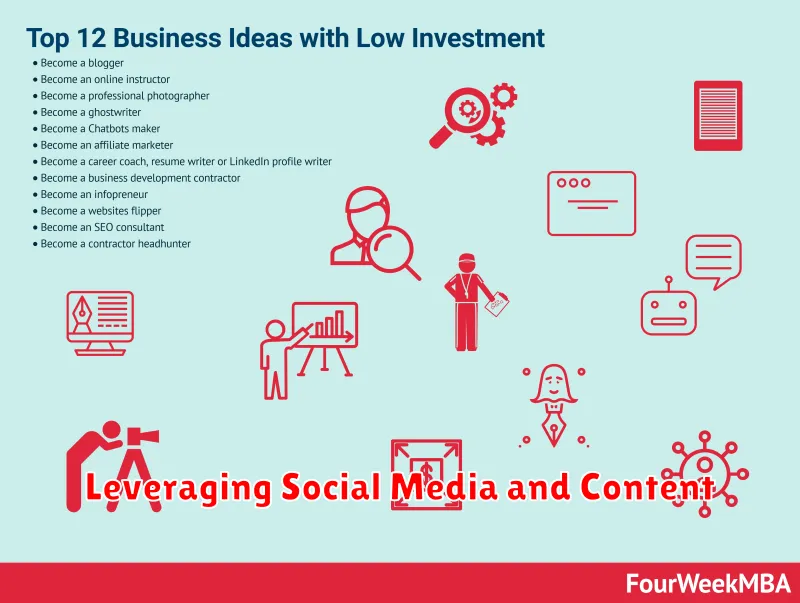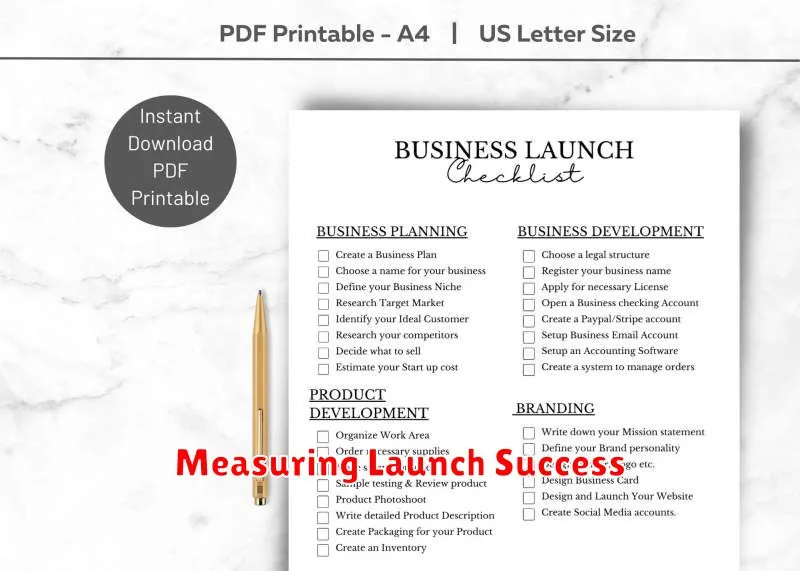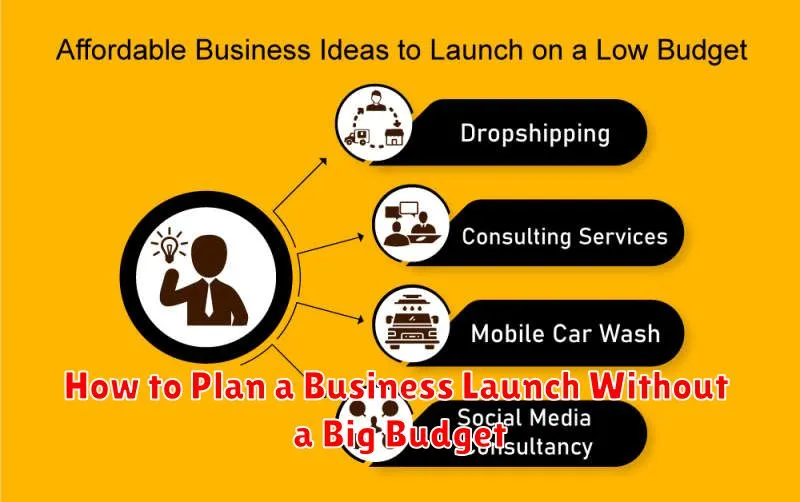Launching a new business can feel daunting, especially when you’re working with a limited budget. Many entrepreneurs believe a large financial investment is essential for a successful launch, but this simply isn’t true. This article will explore practical and effective strategies to plan a business launch without breaking the bank. You’ll learn how to prioritize essential expenses, leverage free marketing tools, and create a launch plan that maximizes impact while minimizing costs. By focusing on creativity, resourcefulness, and strategic planning, you can achieve a successful low-budget business launch.
Successfully launching a business on a small budget requires careful planning and execution. From market research to public relations, every aspect of your launch needs to be optimized for cost-effectiveness. We’ll cover essential topics such as identifying your target audience, crafting a compelling brand message, and utilizing digital marketing strategies that don’t require a significant financial outlay. Discover how to generate buzz, attract customers, and build a strong foundation for your business, all while adhering to a budget-conscious approach.
Focusing on Your MVP (Minimum Viable Product)
A limited budget necessitates a laser focus on your Minimum Viable Product (MVP). This is the most basic version of your product that delivers core value to early adopters.
By prioritizing essential features, you can minimize development costs and speed up your time to market. Gathering feedback from early users of your MVP is crucial. This allows you to validate your product idea, identify necessary improvements, and iterate based on real-world usage.
Remember, your MVP isn’t meant to be perfect. It’s a stepping stone towards a more refined product, built upon valuable user insights and developed within budget constraints.
Using Free and Low-Cost Tools
Launching a business doesn’t require expensive software and services. Leverage free and low-cost tools to manage your budget effectively.
For project management, consider free options like Trello or Asana. These platforms help organize tasks, collaborate with team members (if applicable), and track progress.
Social media is a powerful, free marketing tool. Create engaging content and interact with your target audience on relevant platforms.
Utilize free design tools like Canva to create marketing materials, social media graphics, and even presentations. Basic email marketing services often offer free plans for a limited number of subscribers.
Building a Pre-Launch Audience
Generating pre-launch buzz is crucial, even on a tight budget. A pre-launch audience provides valuable feedback and creates initial demand. Start by identifying your target audience. Where do they spend their time online?
Leverage free platforms. Build an email list by offering valuable content like a pre-launch checklist or guide. Create social media profiles and share engaging content related to your upcoming product or service. Run contests and giveaways to generate excitement and grow your follower base.
Engage with relevant online communities. Participate in forums and groups where your target audience gathers. Answer questions, offer helpful advice, and subtly introduce your upcoming launch. Building relationships within these communities can create organic interest and word-of-mouth marketing.
Leveraging Social Media and Content

Social media offers powerful free marketing channels for budget-conscious launches. Focus on platforms relevant to your target audience. Create engaging content that builds anticipation and highlights your unique selling proposition.
Develop a content calendar to schedule posts leading up to launch day. This could include behind-the-scenes glimpses, product teasers, and valuable content related to your industry.
Run contests and giveaways to generate excitement and grow your follower base. Encourage sharing and user-generated content to amplify your reach organically.
Reaching Out to Micro-Influencers
Micro-influencers can be a cost-effective way to generate buzz for your launch. They typically have a smaller, but highly engaged audience, often within a specific niche. This targeted reach can be more valuable than broader, less focused campaigns.
When reaching out, personalize your message. Highlight what you appreciate about their content and explain why your product or service aligns with their audience’s interests. Offer a mutually beneficial partnership, such as free product in exchange for an honest review or a commission on sales generated through their unique code.
Track your results. Monitor engagement metrics like likes, comments, and shares to assess the effectiveness of each collaboration.
Collecting Early Feedback
Gathering feedback in the early stages of your business is crucial for refining your product or service and ensuring it resonates with your target audience. A budget-conscious approach involves leveraging free or low-cost methods.
Reach out to your personal and professional networks. Surveys are an effective tool for collecting structured feedback. Create simple questionnaires using free online platforms and distribute them via email or social media. Directly engaging with potential customers through interviews or small focus groups provides valuable qualitative insights.
Analyze the feedback received and identify recurring themes or issues. Use this information to make necessary adjustments before your official launch. Remember, early feedback can save you time and resources in the long run.
Partnering With Complementary Brands
Launching a business on a tight budget requires creative resourcefulness. One powerful strategy is partnering with complementary brands. This involves collaborating with businesses that target a similar audience but offer non-competing products or services.
By pooling resources, you can expand your reach and reduce individual marketing costs. For example, a local bakery could partner with a coffee shop for a joint promotion. This allows both businesses to tap into each other’s customer base, increasing brand visibility and potentially driving sales without significant individual expenditure.
This approach offers a mutually beneficial arrangement where both brands contribute their strengths and resources, achieving a broader impact than either could achieve alone. This can include combined social media campaigns, joint events, or cross-promotional offers.
Creating a DIY Landing Page
A landing page is essential for collecting leads and building pre-launch buzz, even on a tight budget. Fortunately, creating one yourself is surprisingly achievable.
Several website builders offer user-friendly interfaces and free or low-cost plans. These platforms typically provide drag-and-drop functionality and pre-designed templates, eliminating the need for coding expertise.
Focus on a clear call to action. Encourage visitors to sign up for updates, join a waitlist, or pre-order your product. Keep the design clean and concise, highlighting the key benefits of your offering.
Announcing With a Live or Online Event
Launching with an event, whether live or online, creates excitement and buzz. A live event allows for direct interaction with your target audience, fostering a sense of community. Consider a small-scale gathering like a launch party or pop-up shop.
Online events, such as webinars or live streams, offer broader reach and cost-effectiveness. These platforms enable you to engage with a larger audience, regardless of location. Ensure strong engagement by incorporating Q&A sessions and interactive elements.
Key considerations for both live and online events include careful planning, promotion, and audience engagement strategies. Evaluate your budget and target audience to determine the best format for your launch event.
Measuring Launch Success

A successful launch isn’t just about fanfare; it’s about achieving measurable results. After the initial excitement, analyzing key performance indicators (KPIs) is crucial. These metrics offer valuable insights into your launch’s effectiveness and inform future strategies.
Key metrics to consider often include website traffic, sales conversions, social media engagement, and lead generation. Set realistic goals for each KPI before launch. This provides benchmarks against which to measure progress.
Tracking these KPIs allows you to identify what worked well and where improvements are needed. Perhaps your social media campaign drove significant traffic, but conversions lagged. This insight can inform future marketing efforts, focusing on optimizing conversion rates.

